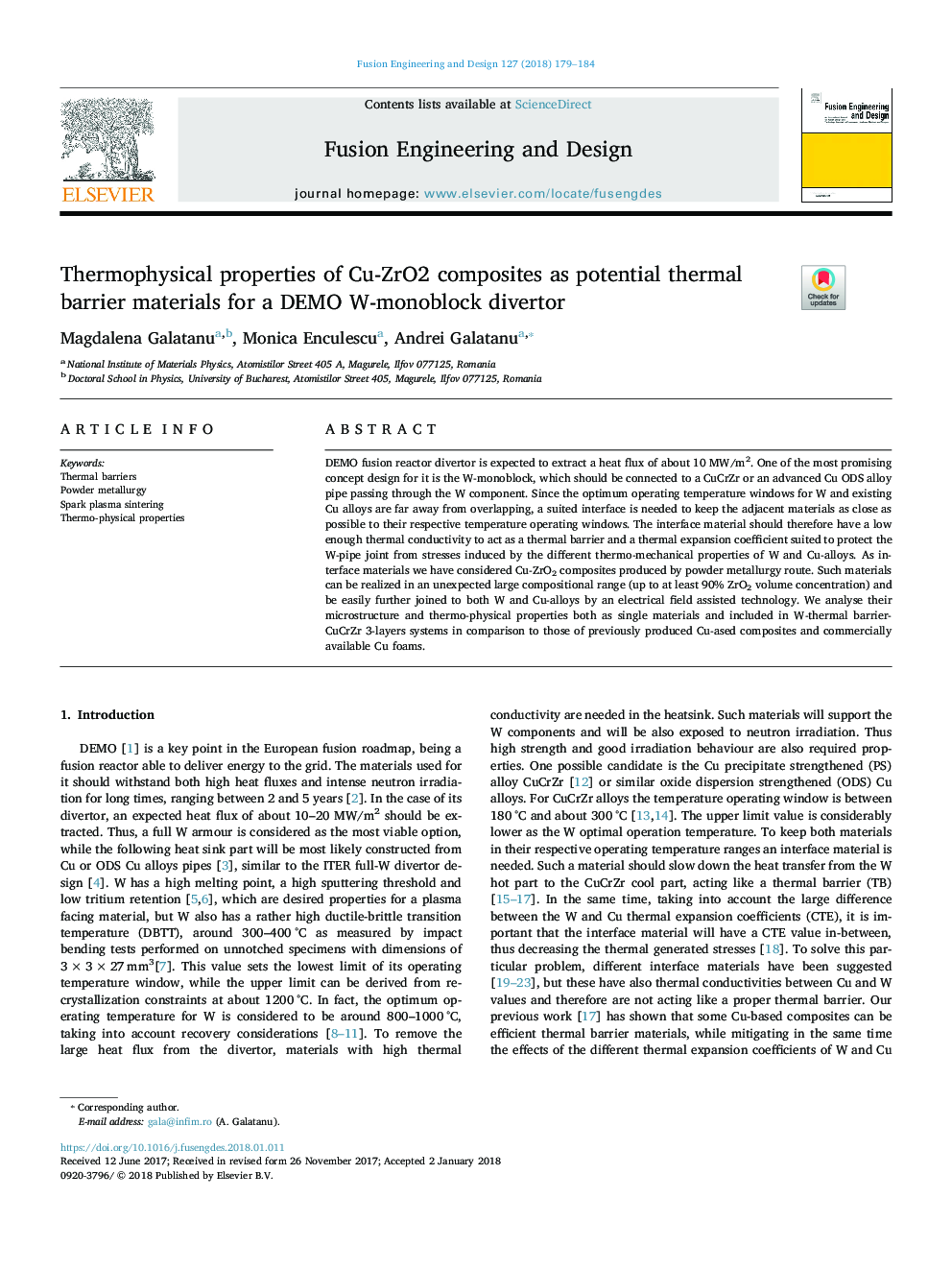| Article ID | Journal | Published Year | Pages | File Type |
|---|---|---|---|---|
| 6743518 | Fusion Engineering and Design | 2018 | 6 Pages |
Abstract
DEMO fusion reactor divertor is expected to extract a heat flux of about 10 MW/m2. One of the most promising concept design for it is the W-monoblock, which should be connected to a CuCrZr or an advanced Cu ODS alloy pipe passing through the W component. Since the optimum operating temperature windows for W and existing Cu alloys are far away from overlapping, a suited interface is needed to keep the adjacent materials as close as possible to their respective temperature operating windows. The interface material should therefore have a low enough thermal conductivity to act as a thermal barrier and a thermal expansion coefficient suited to protect the W-pipe joint from stresses induced by the different thermo-mechanical properties of W and Cu-alloys. As interface materials we have considered Cu-ZrO2 composites produced by powder metallurgy route. Such materials can be realized in an unexpected large compositional range (up to at least 90% ZrO2 volume concentration) and be easily further joined to both W and Cu-alloys by an electrical field assisted technology. We analyse their microstructure and thermo-physical properties both as single materials and included in W-thermal barrier-CuCrZr 3-layers systems in comparison to those of previously produced Cu-ased composites and commercially available Cu foams.
Related Topics
Physical Sciences and Engineering
Energy
Energy Engineering and Power Technology
Authors
Magdalena Galatanu, Monica Enculescu, Andrei Galatanu,
